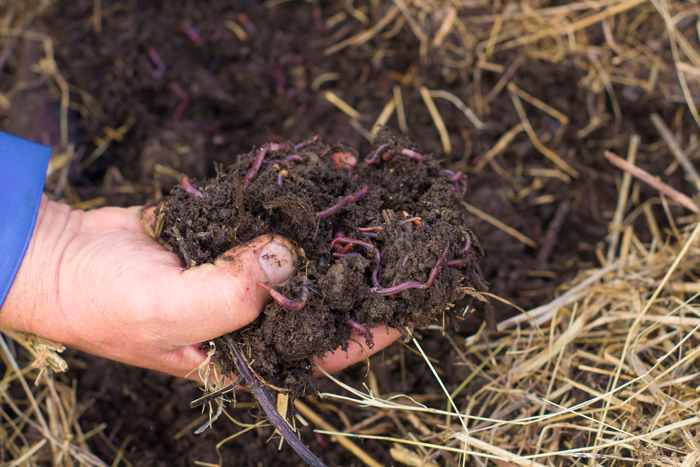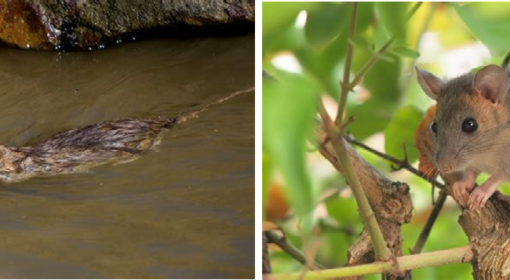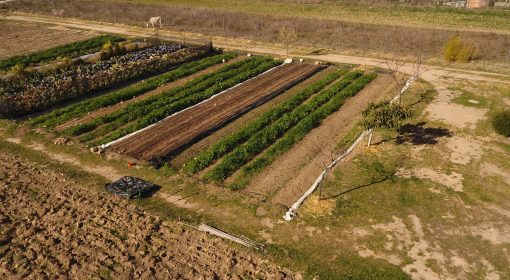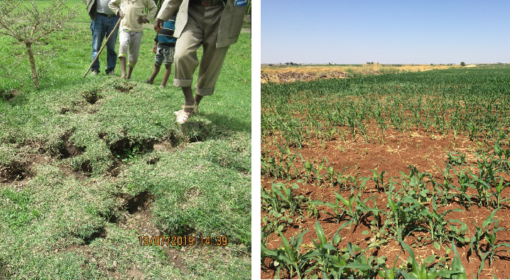by Elie Dib and Frank van Steenbergen
June 4, 2021

Above ground animals and insects are not the only living organisms that have seen their populations decrease alarmingly. Equally, soil life – the network of organisms living in the soil, from micrometers long bacteria to centimeters and sometimes meters long earthworms – has taken a battering. As opposed to aboveground organisms, rainworms and other soil organisms are rarely counted due to their hidden habitats. However, surveys often give an indication of decreases in their numbers.
An example is a research that was conducted by Dr. Jacqueline Stroud in which volunteers from England sampled earthworms. They were asked to dig out a 20 cm per side, and deep, soil pit using a spade or garden fork and a ruler. The earthworms from the soil sample were placed in a pot and sorted between adults and juveniles. Juveniles were placed back in the pit, while the adults were counted and sorted by ecological category. This was repeated ten times per volunteer, meaning ten pits were dug out per field for accuracy. The results for the adults were then sent for analysis along with data on basic field management, including crop, tillage, size, and whether they were under organic matter management (cover cropping, organic composting etc.).
They found that 42% of the studied fields contained few if any of the key types of earthworms, because they were overworked. Human activities such as tillage were found to have a negative impact on earthworm population, and organic matter management did not mitigate its impacts. Therefore it was clear that us humans play a big role in the decline of soil life. We are inhibiting the activities of important soil organisms, such as earthworms, sowbugs or termites. We are preventing them from carrying out their services in the ecosystem, namely improving soil quality and structure. This is counterproductive. Farmers are forced to take recourse to the use of costly conventional amendments and practices such as ploughing and applying chemical fertilizers. These actions will accelerate the degradation of soil life, thereby increasing the farmers’ dependence to them. Additionally, a research on song thrush birds, earthworms’ natural predators, associated the decline in their numbers in England to the decline in the number of rainworms, further accentuating the importance of soil life in nature’s balance.
Earthworms are classified into ecological categories according to their behaviors and the layers in the soil they occupy. They are classified into:
- Epigeic earthworms, which feed on surface litter (such as dead leaves) and live in the litter layer or top centimeters of the soil. Examples are the red worms, also called red wigglers or manure worms. These species are the most used in vermicomposting around the world.
- Endogeic earthworms, which feed on soil and associated organic matter and live in non-permanent burrows deeper in the soil.
- Anecic earthworms, which can live in deeper layers of the soil and make permanent vertical burrows. They feed on surface litter and dragging it to the deeper layers.
No matter what ecological category they belong to, earthworms are very sensitive to changes in their environment. When under stressful conditions they tend to move to different, normally deeper layers in the soil, or go into ‘diapause’, which is a state of inactivity. Before going into diapause, the worms tend to form a small chamber around themselves with mucus, cast or large sand grains that adhere to them. They then coil up and become inactive.
There are different ways to evaluate how rich a soil is in earthworms and how much the soil is alive. A practical and simple method would be to dig out a 200-mm cube of soil with a spade or garden fork as described in Dr. Stroud’s research and count the earthworms, placing them in a pot, while taking note of the diversity of species. If less than 15 earthworms with one predominant species are counted, the soil is poor in earthworms. If between 15 and 30 earthworms with two or more species are counted, the soil is moderately rich in earthworms. If more than 30 earthworms with three or more species are counted, the soil is rich in earthworms. If some parts of the land have very different soil conditions– such as different moisture or organic matter contents– earthworms cannot be assumed to be uniformly spread throughout the field. In that case, repeat the process across different patches of the land.
In arid soils, earthworms can increase the organic matter content which increases the soil’s capacity to retain water. By forming vertical burrows, earthworms can increase the soil’s aeration and drainage with the burrows acting as channels for air and water deep into the soil. This increase in drainage can decrease soil erosion by decreasing surface runoff and hence the dislodgement of soil particles. Earthworms’ vertical burrows also increase the soil’s resilience to drought by increasing the porosity of soils and hence their water storage capacity.
Earthworms’ ability to accelerate decomposition, which is the transformation of organic matter such as manure to available inorganic nutrients (or minerals) for plants to take up, places earthworms in the ‘decomposers’ category. After feeding on organic matter and nitrogen and phosphorus rich particles, earthworms produce casts which creates nutrient rich hotspots around the roots of the plants. Earthworm cast also creates optimal conditions for microbial activity.
When in the soil, earthworms increase the pH by releasing calcium carbonate through their calciferous glands, and increase the soil’s dissolved organic carbon content. These compounds in the soil trigger chemical reactions, desorbing phosphorus from metal oxides and making it available for plants to uptake.
Earthworms’ abilities to enhance nutrient uptake, mix and turnover the soil, and increase drainage, make them huge assets to have in the soil by decreasing the need to carry out several costly practices in conventional agriculture such as ploughing, irrigation and application of chemical fertilizer. Moreover, earthworms perform these functions for free; therefore, keeping them around and keeping them happy can reduce operating costs.
Common misconceptions in agriculture are hurting lands by disrupting soil organisms’ habitats and functions. Some of the most common misconceptions are:
- Thinking that ploughing is always necessary. Actually, it dries soil making it cloddy and forcing more irrigation.
- Thinking that more of anything that is beneficial is always better. For example, excessively irrigating and flooding soils which reduces aeration and forces organisms such as earthworms to move to the soil surface where they will be exposed to UV radiation and get picked up by predators.
- Another example is the excessive use of synthetic fertilizers which, in arid areas, can increase the soil’s salinity and acidity, or the excessive use of contact pesticides which kill almost all the organisms living in soils.
There are measures and actions that can be implemented to achieve the desired productivity while sustainably maintaining farmlands. These consist of creating optimal conditions for soil life to flourish and carrying out their functions. For most earthworms, optimal conditions would be a soil temperature ranging from 15 to 20°C, a soil moisture of 60-70% which allows adequate soil aeration, and a soil pH ranging from 5 to 8. To that end, here are some of the important do’s:
- Adopting a no-till system is a good start in transitioning towards soil-friendly/regenerative agriculture. In the presence of hard-to-control weed, an occasional light tillage by forming ridges to conserve soil moisture can be beneficial.
- Another efficient method to conserve soil moisture is keeping a soil cover. Cover crops will additionally provide a food source of organic matter for earthworms and protect them from predation and UV radiation. Examples of cover crops are Vetch or Soybean, which can also fix nitrogen.
- If soils are acidic with a pH below 5, applying lime can be very useful to increase the pH to between 5 and 8.
- The choice of irrigation method depends on several factors such as the crops being planted, size of the land and type of soil. However, some irrigation practices are friendlier to rainworms in our farmland than others. It is important to note that, as we previously mentioned, overirrigating and flooding the field can have detrimental effects on soil life. Inversely, practices that avoid flooding are preferable. For example, in the presence of a hard-to-control weed, lightly tilling the field and forming ridges will help conserve the moisture and can provide shelter for worms from water-saturated soils.
- In the case of a pest invasion, releasing the pest’s natural predator or adopting a push-pull system by intercropping ‘push’ plants which repel the pest, and ‘pull’ plants which trap the pest are more ecological alternatives to chemical pesticides.
To some, farmland is just the place where we work, but to others it is much more; it is a living system that we work with to produce our food and livelihoods. In my opinion, any person who cares about their land should consider adopting this approach to land and water management, which has come to be known as regenerative agriculture.




